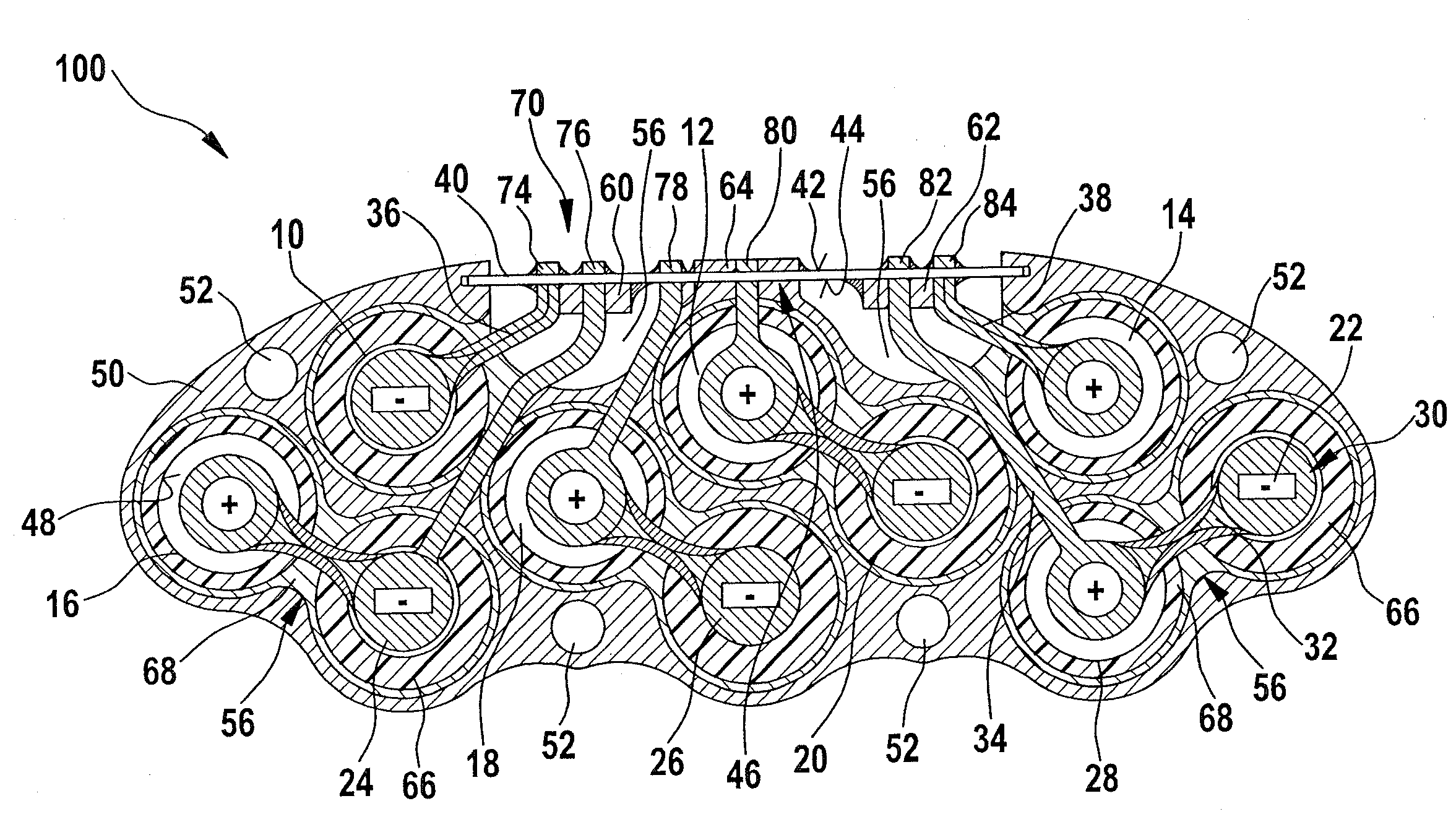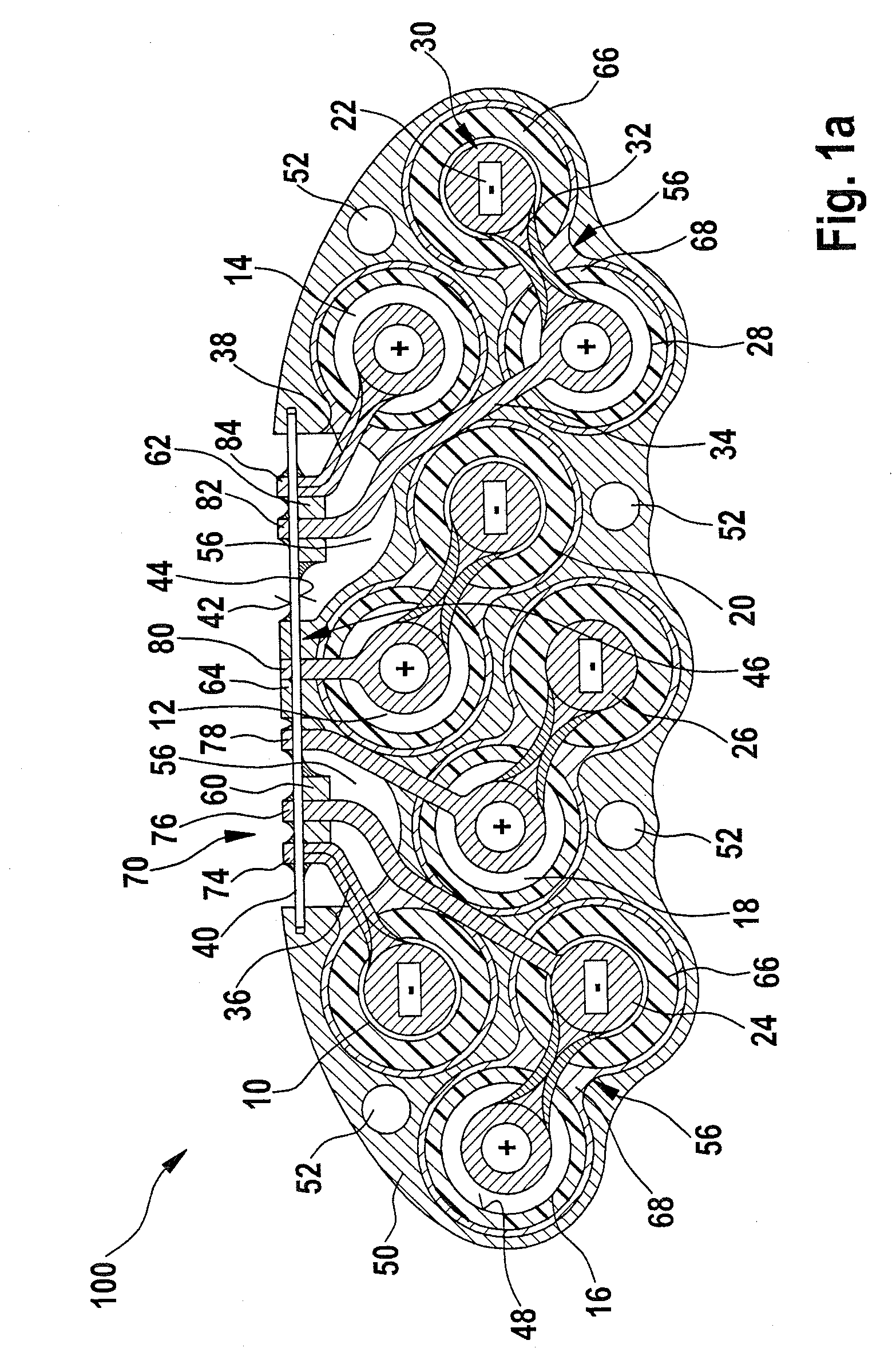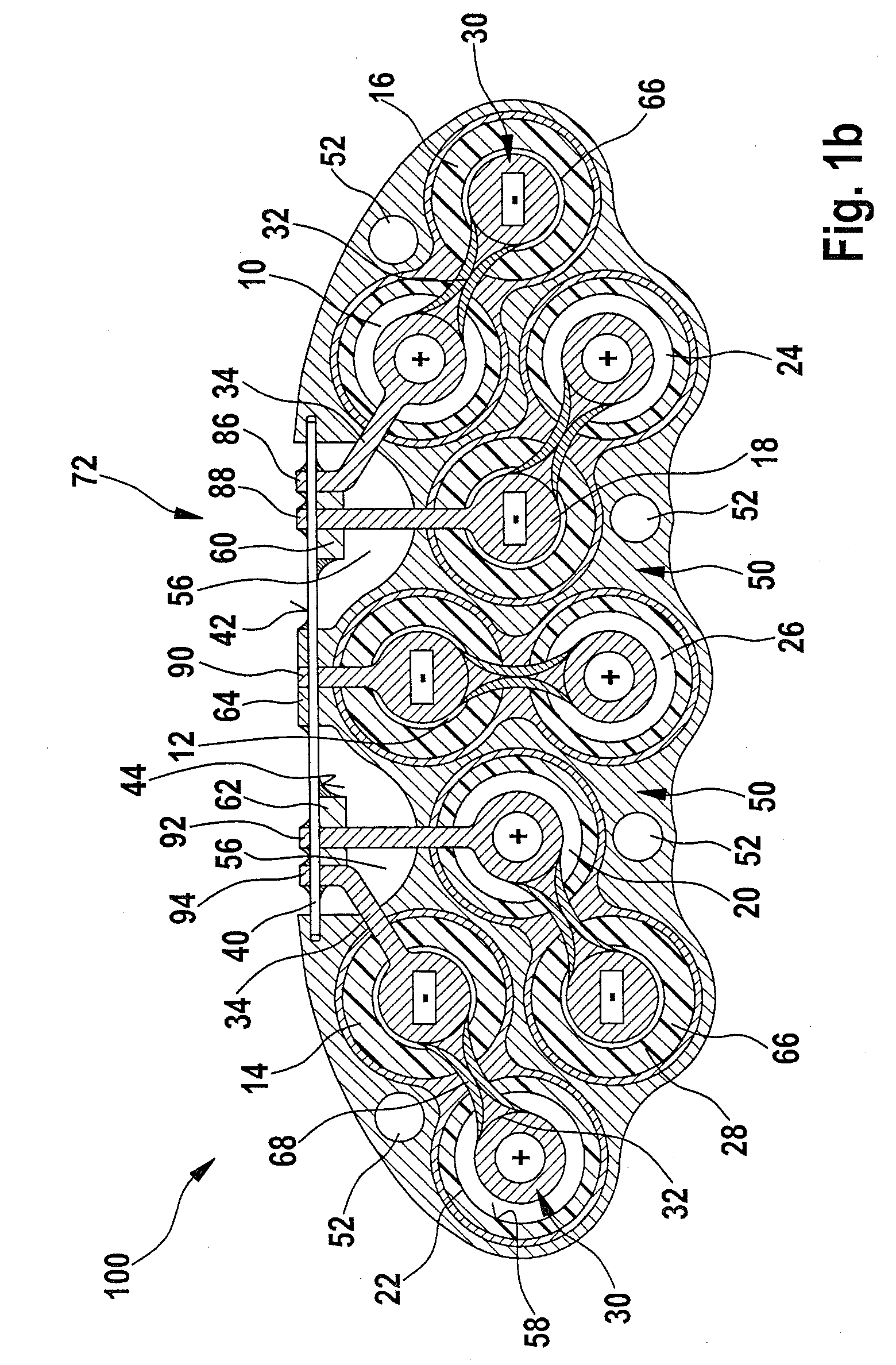Battery pack and battery module and method for operating a battery module
a battery module and battery pack technology, applied in the direction of secondary cell servicing/maintenance, cell component details, cell components, etc., can solve the problem of space-saving design of connecting the cell connector, and achieve the effect of reducing the fuel consumption of the hybrid vehicle and being effective and non-destructiv
- Summary
- Abstract
- Description
- Claims
- Application Information
AI Technical Summary
Benefits of technology
Problems solved by technology
Method used
Image
Examples
Embodiment Construction
[0036]Components that are the same or similar are labelled with the same reference numerals in the figures. FIGS. 1a and 1b explain the present invention with reference to a top view of a top side (FIG. 1a) and an underside (FIG. 1b) of a preferred battery pack 100. Battery pack 100 includes, e.g., ten cylindrical cells 10, . . . , 28, in a hexagonal configuration, which enables cells 10, . . . , 28 to be packed as tightly as possible. Depending on the need, more or fewer cells may be provided, and the cells may be positioned in any configuration required.
[0037]Cells 10, . . . , 28 preferably have the same design and are oriented antiparallel relative to each other, as depicted schematically in FIG. 3 based on two cells; the antiparallel orientation is not labeled separately. As a result, a longitudinal extension 98 of one cell body 96 is oriented parallel to longitudinal extension 98 of adjacent cell body 96. Electrical positive pole 96a of one cell 96 points toward the same side a...
PUM
| Property | Measurement | Unit |
|---|---|---|
| voltage | aaaaa | aaaaa |
| voltage | aaaaa | aaaaa |
| output voltages | aaaaa | aaaaa |
Abstract
Description
Claims
Application Information
 Login to View More
Login to View More - R&D
- Intellectual Property
- Life Sciences
- Materials
- Tech Scout
- Unparalleled Data Quality
- Higher Quality Content
- 60% Fewer Hallucinations
Browse by: Latest US Patents, China's latest patents, Technical Efficacy Thesaurus, Application Domain, Technology Topic, Popular Technical Reports.
© 2025 PatSnap. All rights reserved.Legal|Privacy policy|Modern Slavery Act Transparency Statement|Sitemap|About US| Contact US: help@patsnap.com



